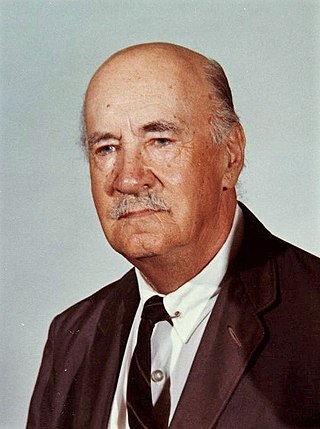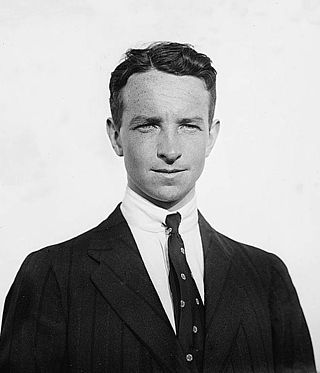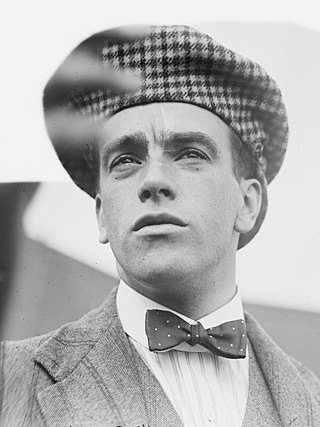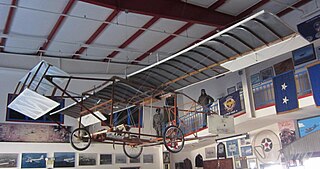
Blackburn Aircraft Limited was a British aircraft manufacturer from 1914 to 1963 that concentrated mainly on naval and maritime aircraft.

Igor Ivanovich Sikorsky was a Russian–American aviation pioneer in both helicopters and fixed-wing aircraft. His first success came with the Sikorsky S-2, the second aircraft of his design and construction. His fifth airplane, the S-5, won him national recognition and F.A.I. pilot's license number 64. His S-6-A received the highest award at the 1912 Moscow Aviation Exhibition, and in the fall of that year the aircraft won first prize for its young designer, builder and pilot in the military competition at Saint Petersburg. In 1913, the Sikorsky-designed Russky Viyaz (S-21) became the first successful four-engine aircraft to take flight. He also designed and built the Ilya Muromets family of four-engine aircraft, an airliner which he redesigned to be the world's first four-engine bomber when World War I broke out.

Glenn Hammond Curtiss was an American aviation and motorcycling pioneer, and a founder of the U.S. aircraft industry. He began his career as a bicycle racer and builder before moving on to motorcycles. As early as 1904, he began to manufacture engines for airships. In 1908, Curtiss joined the Aerial Experiment Association, a pioneering research group, founded by Alexander Graham Bell at Beinn Bhreagh, Nova Scotia, to build flying machines.

John William Dunne was a British soldier, aeronautical engineer and philosopher. As a young man he fought in the Second Boer War, before becoming a pioneering aeroplane designer in the early years of the 20th century. Dunne worked on automatically stable aircraft, many of which were of tailless swept wing design, to achieve the first aircraft demonstrated to be stable. He later developed a new approach to dry fly fishing before turning to speculative philosophy, where he achieved some prominence and literary influence through his "serialism" theory on the nature of time and consciousness, first set out in his book An Experiment with Time.

Sir Thomas Octave Murdoch Sopwith, CBE, Hon FRAeS was a British aviation pioneer, businessman and yachtsman.

SPAD was a French aircraft manufacturer active between 1911 and 1921. Its SPAD S.XIII biplane was the most produced French fighter airplane of the First World War.

Waldo Dean Waterman was an inventor and aviation pioneer from San Diego, California. He developed a series of tailless swept-wing aircraft incorporating tricycle landing gear, culminating in a low-cost and simple-to-fly flying car.

Claude Grahame-White was an English pioneer of aviation, and the first to make a night flight, during the Daily Mail-sponsored 1910 London to Manchester air race.

Blériot Aéronautique was a French aircraft manufacturer founded by Louis Blériot. It also made a few motorcycles between 1921 and 1922 and cyclecars during the 1920s.

Aéroplanes Hanriot et Cie. or simply 'Hanriot' was a French aircraft manufacturer with roots going back to the beginning of aviation. Founded by René Hanriot in 1910 as The Monoplans Hanriot Company Ltd., the company survived in different forms until 1916 when it established itself with the Hanriot-Dupont (HD.) fighters and observation aircraft. The company lasted through several takeovers and structural changes until, in 1936, it merged with Farman to become the Société Nationale de Constructions Aéronautiques du Centre (SNCAC). 'Central Air Works' consortium.

The Farman III, also known as the Henry Farman 1909 biplane, was an early French aircraft designed and built by Henry Farman in 1909. Its design was widely imitated, so much so that aircraft of similar layout were generally referred to as being of the "Farman" type.
Carl S. Bates was an aviation pioneer from Clear Lake, Iowa. He piloted gliders in 1899, and in 1906 he designed a gasoline-powered airplane that was equipped with an air-cooled engine, a metal propeller and metal wing rudders.

The Epps 1907 Monoplane was a pioneering aircraft built and flown in 1907 by Ben T. Epps of Athens, Georgia from an original design. The aircraft consisted of an open framework suspended below a wire-braced monoplane wing. The undercarriage consisted of three bicycle wheels, one at the front of this frame, and two behind it. A buggy seat was located beneath the wing for the pilot. A 15-horsepower (11 kW) two-cylinder Anzani motorcycle engine was mounted behind the seat and drove a two-bladed propeller from an exhaust fan mounted pusher-fashion behind the wing's trailing edge. A biplane elevator unit was carried on struts at the front of the aircraft, and a single rudder on struts to its rear. The airframe was made from scrap timber collected from a sawmill, with the flying surfaces covered in cotton. Only the undersurfaces of the wings were covered.
The Epps 1909 Monoplane was a fixed-wing aircraft that was designed and built in 1909 in Athens, Georgia by Ben T. Epps and his business partner Zumpt Huff.
William E. Somerville was a Scottish-American aircraft engineer.

The pioneer era of aviation was the period of aviation history between the first successful powered flight, generally accepted to have been made by the Wright Brothers on 17 December 1903, and the outbreak of the First World War in August 1914.















